The 7 Necessary Elements of What Makes a Blog Successful

Any blog can be successful if it has the right components. I've built and grown dozens of blogs over the years, and with my experience, I've distilled those components down into seven necessary elements. If your blog has all seven of these, you're going to succeed; it's just a matter of patience, investment, and time.
So, what are they? You're in luck; I'm going to give you all seven.
 30 Second Summary
30 Second Summary
You need seven important elements to build a successful blog. You have to start with proper design using a framework like WordPress and ensure your site has fast loading speeds, mobile compatibility and good meta information. You need high-quality content that's free of errors and easy to read. You should study your competition carefully and be very selective about which topics you write about. You have to mix different content types, plan ahead with content calendars and stay patient while your blog grows. Finally, you need a clear plan to make money from your blog with ads, affiliate marketing or selling products.
1. Proper Design
The foundation of a good site is its design. Luckily, here in 2021, most of the foundation of a good site is done simply by using a framework, usually WordPress. You can use a different platform or custom-build your own, but with the many powerful frameworks out there, you have many solid options.
So, what goes into a good site design, and why is it so important for your performance?
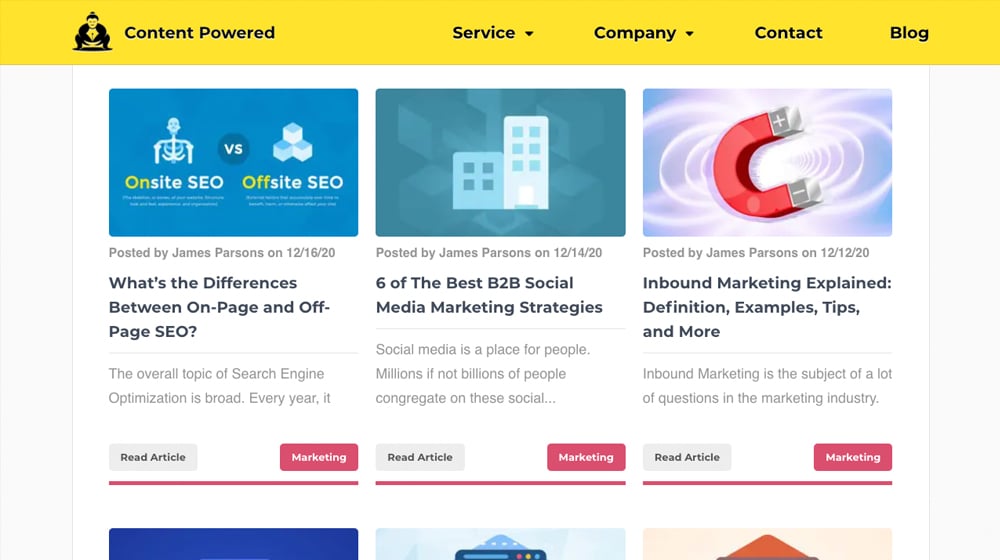
There are a lot of little elements that, when combined, make a large impact on the performance of your blog.
- No duplicate pages. This includes system and image pages generated by plugins.
- No low-quality pages. If you find pages that are necessary but seem low quality, such as attachment or tag pages, consider giving them the "noindex" tag.
- Fast loading speed and good rankings in the core web vitals metrics.
- User-friendly design elements such as a logo that links to your homepage, an easy-to-use navigation bar, breadcrumbs, and human-readable URLs.
- Reasonable style choices for font size and color, with attention paid to contrast (which you can check with a tool like this one). For example, fonts that are too small or too light in color could hurt your performance.
- Mobile compatibility. These days, I highly recommend a responsive design rather than a separate mobile site. You can read more about the benefits of a responsive website here.
- Usage of metadata. Meta titles and meta descriptions are very important; make sure every blog post has this info filled out. Using Schema.org markup where possible is also a good idea.
- Visible and obvious branding. For example, I use a specific color of yellow, my sumo logo, and consistent use of formatting for my branding.
Most of this can be done simply by using WordPress with high-quality and properly-designed themes, as well as a few solid plugins. I have other posts on this site about those elements, and you can find guides all over the web with advice that still stands. There's a ton of flexibility within these "constraints", so much so that it's difficult to refer to them as constraints.
2. Quality Content
A blog is nothing without its content. Every piece of content you publish on your site, from your About page to your average day-to-day blog posts to your flagship skyscraper 10x whatever-buzzword-you-prefer content needs to be high quality.
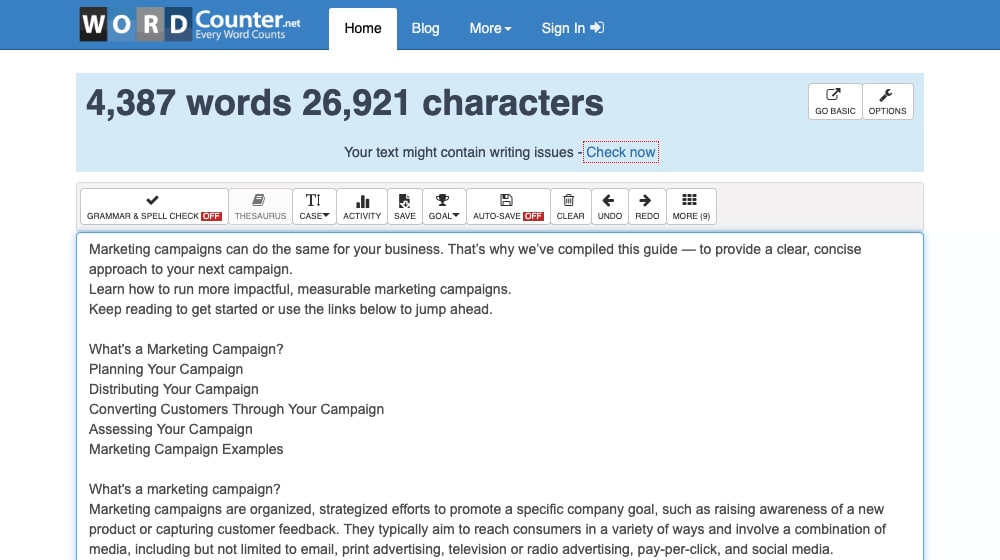
Quality is made up of several categories of, well, qualities. Some are technical, some are stylistic, and some are meta.
Technical indicators of quality include:
- Content free of typos and grammatical errors.
- Use of formatting, lists, subheadings, and links.
- Short, easy-to-read paragraphs that are easy to skim for value.
- No copied, spun, or plagiarized content.
Stylistic indicators of quality include:
- A conversational tone for your writing.
- A logical flow to each piece, from introduction to conclusion.
- An emotional perspective or resonance, coupled with a call to action.
- A style that understands who you're writing to, and what level of knowledge they have.
Meta indicators of quality include:
- Using links, both internal and external.
- Including images that are high quality and have meta-information filled out.
- An adequate amount of words to fully cover the topic you're writing about.
This list is by no means comprehensive. Additionally, the concept of "quality" is at least partially subjective. As you progress in blogging, you'll see that Google will often adjust or change its standards. More importantly, the community will change and grow overall. What used to be a high-quality blog post five years ago is now the middle of the road at best.
Pressures from internal and external forces will gradually adjust the standards of quality in your industry and the quality of blogging as a whole. You'll learn and internalize them over time, but doing reading about quality can give you a good idea of where to start.
I also highly recommend picking a few of your favorite, most popular industry blogs, and studying them. Read them with a critical eye. What are they doing that makes you want to read their content? How is their content ranking compared to the competition, and why? These are questions that can give you insight into their techniques.
3. Competitive Research
In my opinion, possibly one of the most important things you can do as a blog owner is to perform competitive research. What are your competitors doing? What are they writing about, how are they covering it, what keywords are they targeting?
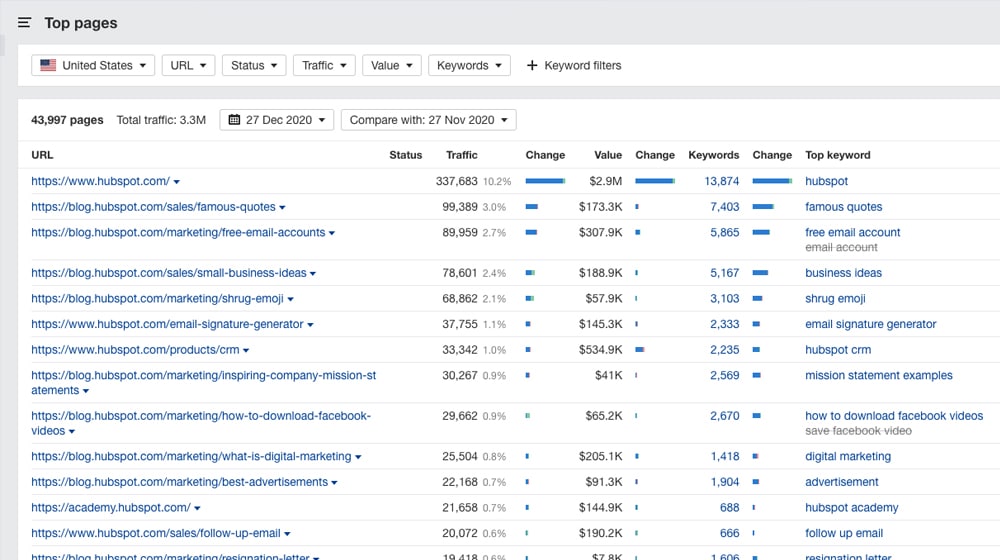
Competitive research is a broad and tricky process. You can focus on something as narrow as the PPC keywords and budgets your competitors are using, or you can do something as broad as a general overview of their topics, as well as metrics of quality like the number of links, the total word count, and how well your images are optimized.
Rather than try to summarize an entire industry in one sub-section of one post, I'm going to provide you with further reading on the subject.
- 7 Competitor Analysis Discoveries to Guide Your Content Strategy - Alexa
- Tools and Tips to Analyze Your Competitors' Blogs – Neal Schaffer
- How Researching Competitors Can Improve Your Blog Content – Social Media Examiner
- How to Do an Effective Competitive Analysis - Brandwatch
- 5 Ways to Find Your Competitors' Highest-Ranking Keywords – Content Powered
Suffice it to say that competitive research is extremely powerful if you take the information that you find and use it to your advantage. Competitive research frequently helps me find topics to write about, as well as specific posts I want to target and out-do with 10x content.
4. Selectivity
A huge portion of your day-to-day life as a blogger will be spent on two things: promotion and research. Research, in particular, eats up a ton of time and energy, even if you use tools to do it. Competitive research is part of it, but you need to research everything about a given topic you might consider writing before you start writing it.
The point here is to be selective with the content you produce. A lot of bloggers like to start by "covering the bases", so to speak. They write a lot of basic, low-level content, the kind of stuff they're learning while they start. To them, it might be revelatory, but for most people, not only is it very basic, it's extremely well-tread content.
There are over 170,000 "beginner's guide to SEO" articles available online. Why would you bother writing one too? Especially as a new blogger, it's unlikely that you'll have something noteworthy to add to the conversation. Companies like Moz, like WordStream, like Yoast, have all covered it in much greater detail than most of us will ever be able to.
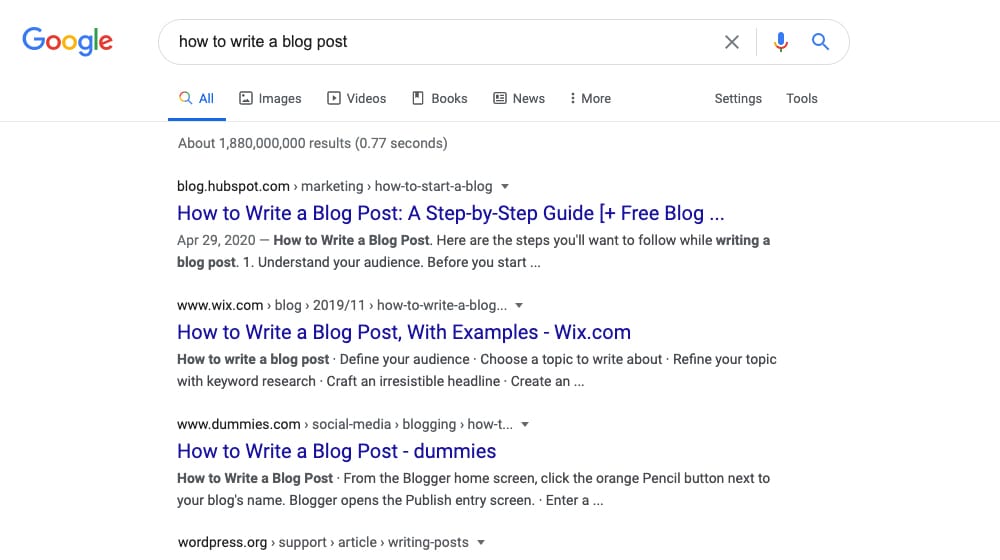
When you do your research, one keyword can spin off 100 different blog article topics, but only 2-3 of those topics are likely to be worth writing.
For every topic, ask yourself a few important questions to determine its suitability.
- What kind of person is searching for that topic, and what are they looking to find?
- What can you add to the conversation around this topic that is unique or valuable?
- How can you build upon what has been published already to create something new?
The goal is to come up with as many topic ideas as you can and only pick the winners to write. 20% of your topics will generate 80% of your results.
5. Mixed Content Types
Not too long ago, I wrote a post about the 12 types of content you might find on a blog. Of those 12 types of content, only a few of them are the kinds of content that you should be focusing on.
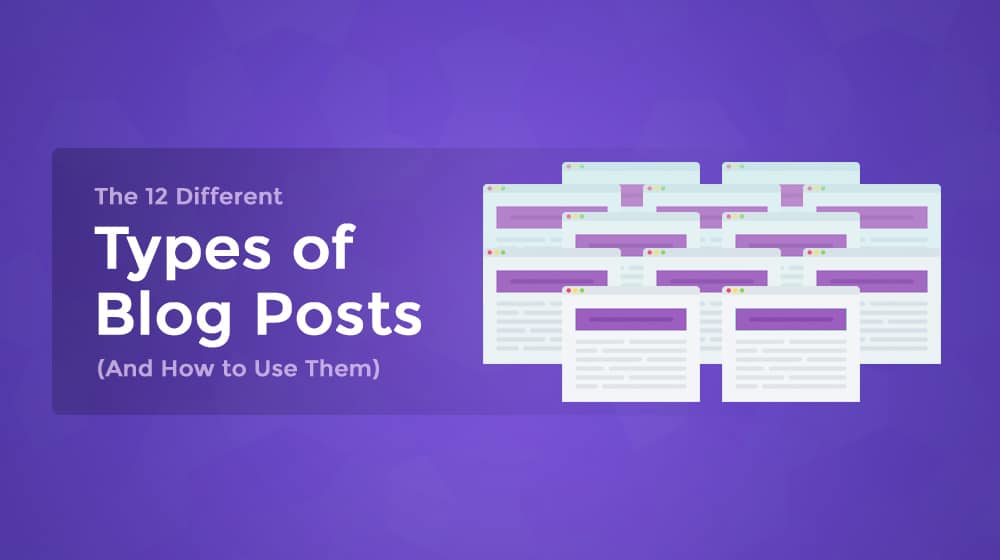
You need to have an awareness of what those kinds of content are, and how to produce them.
Small sites can start with growth-focused and traffic-focused content types. Linkbait is good content to start building SEO value and momentum. Content that provides free value, like calculators, eBooks, and tools are all excellent as well.
In order to draw inspiration for these kinds of content, you can rely on competitive research. Look throughout your industry and identify what your competitors are doing that gets them the most links. Tools like Ahrefs can provide this information.
Once you know what is getting links, you can figure out how to get them yourself. A large part of this is going to be the promotion of your blog articles, but you can't promote content that isn't designed to be promoted. High-quality content with a focus on earning links is ideal for promotion because those links and the other fringe benefits of promotion all help bring in more and more compounding value.
6. Planning and Patience
I'm going to split this one into two parts.
1. Planning: a blog doesn't happen on its own. You need to plan your overall content strategy. You need to plan your promotion mechanism. You need to grow and plan for that growth. Tools and lists are indispensable. A content calendar stretching out at least six months in advance is very important. Lists of topic ideas, lists of research you want to do, saved searches in all of your tools; all of these are things that you should consider adding to your arsenal.
Think of a blog like a tree. You can plant a seed, but if you don't give it water, it's not going to grow. If you don't feed it, it's not going to grow. If you don't give it light, it's not going to grow. For a tree to grow successfully, you need to plan where you're going to put it, you need to care for it, you need to consider how it will act a season from now. Will your tree survive the winter? Do you need to prune parts of it so the main trunk grows big and strong? Did you plant it in a place where it will get plenty of light? Are there obstacles overhead, like a roofline or power lines, that inhibit its growth? Are you dedicating time and resources to caring for it every week? These are all metaphorical aspects you need to consider for your blog.
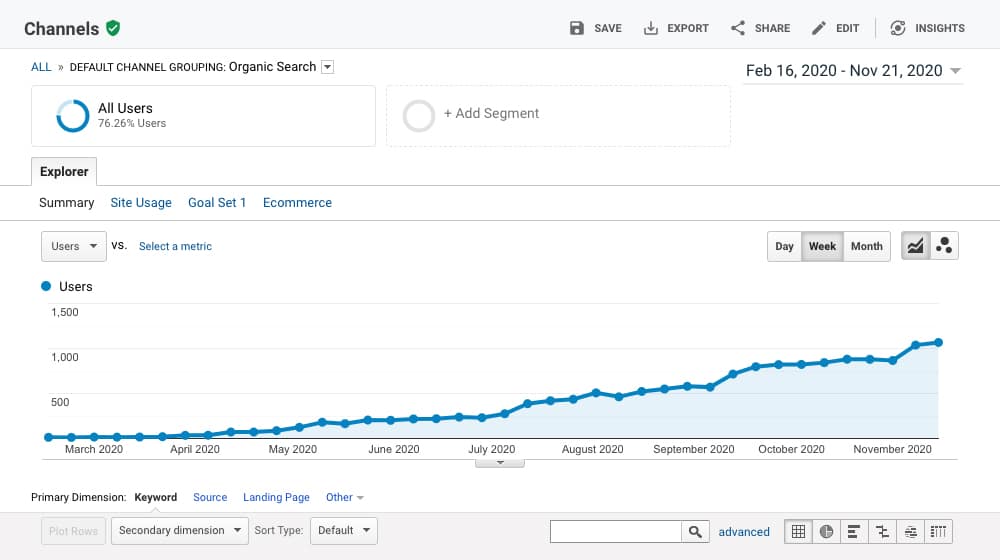
2. Patience: Remember, good things come to those who wait. I love to use metaphors, as you've probably figured out, but one thing I occasionally compare to blogging is an avalanche. The massive impact of an avalanche can't happen without a lot of time and material. Snow falls gradually, and each snowflake is a piece of content that you've produced. It's not going to be enough to make a snowball right away, but your blog posts compound and accumulate to form something great. Your blog gets bigger and bigger until it can move and grow on its own momentum. Eventually, with enough planning and patience, it will become unstoppable.
7. Monetization
Some blogs survive and thrive without any monetization. Those blogs are either personal blogs meant only for a small audience of family members or blogs run by people who are independently important. Blogs are also, potentially, quite expensive to run. The cost of hosting, content production, tools, and other subscriptions; all of these costs add up. Most blogs operate at a loss for a long time.

Monetizing a blog effectively is very difficult. You need to decide on a monetization plan (either running ads, affiliate links, sponsored posts, selling products, services, or a combination). You need to monitor your monetization and optimize it for cash flow. You need to engage your audience and keep them in your orbit. You also have to make sure your monetization strategy is tasteful so you aren't annoying your visitors and hurting your user's experience.
Determine your monetization plan, implement it, and test it. Monitor it and optimize it. Establish and improve on calls to action.
Only once you've done all of this can your blog start to break even, or even turn a profit.



 30 Second Summary
30 Second Summary



February 17, 2021
Do you have a ballpark figure for running a succesful blog, on the lower end and the higher end?
February 17, 2021
Hey Jessica!
On the lower end, you have content mill outsourcing and doing the rest yourself.
This means creating images in Photoshop or an image editing software, uploading them into WordPress, optimizing them for SEO, doing the topic and competitive research, etc.
You'd probably be looking at $400/mo, give or take, for posting one ~1,000-word article per month.
On the higher end, you'd have an agency like ourselves handling your blog for you.
This means a team of people creating images for you, uploading them, optimizing them, choosing the best topics, and doing everything for you.
For this, you'd be looking at closer to $2000-4000+ per month, depending on the volume of content you're looking to publish each month.
There's a stark difference between the results of these two options. Content is something that you want to be perfect - it's hard to do that without a lot of eyes on your content, careful optimization and research, custom graphic design, promotion, and everything else required to be successful.
When in doubt, focus on quality and start slow! You can always scale up your efforts later once you have your proof of concept and are profitable.